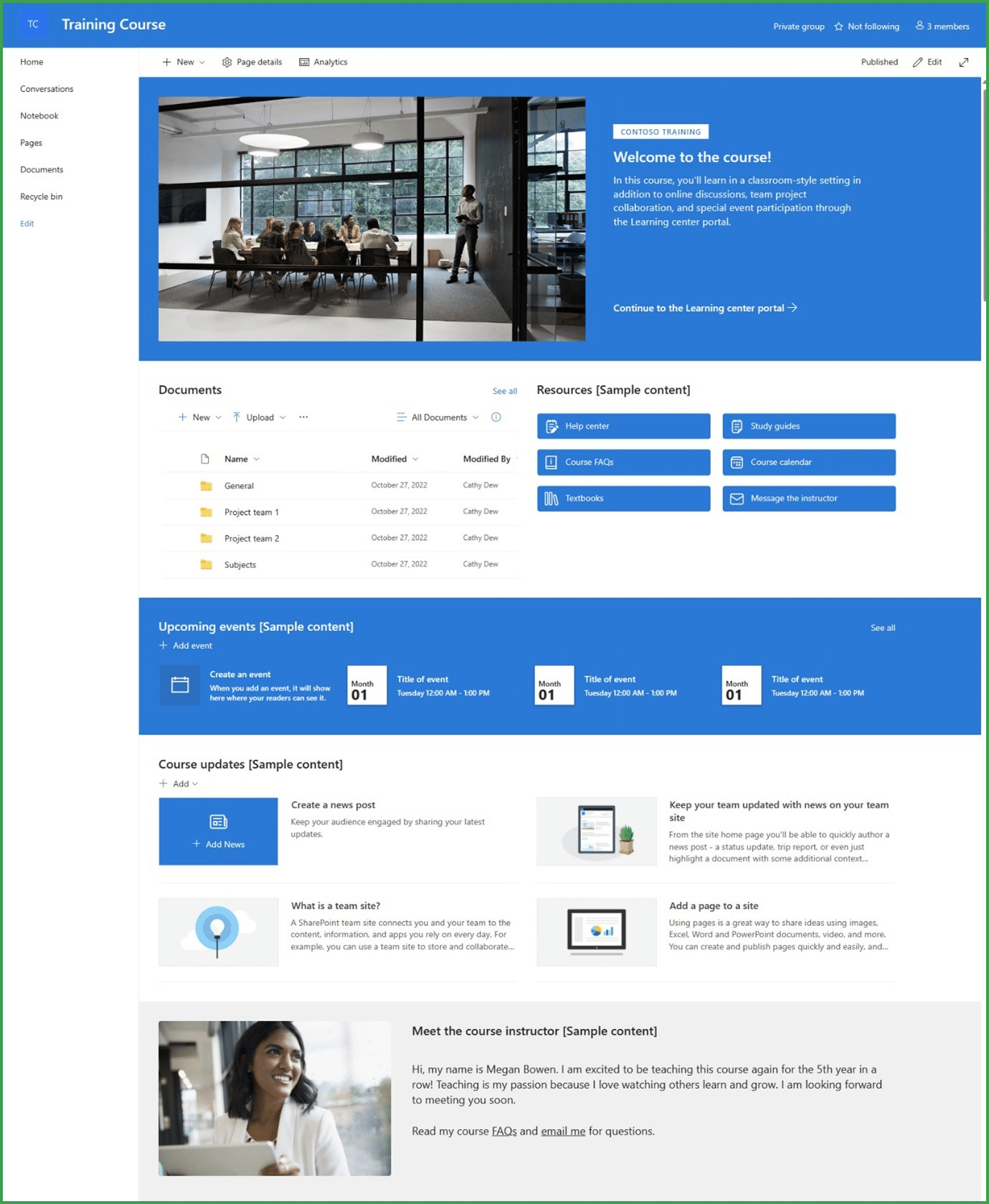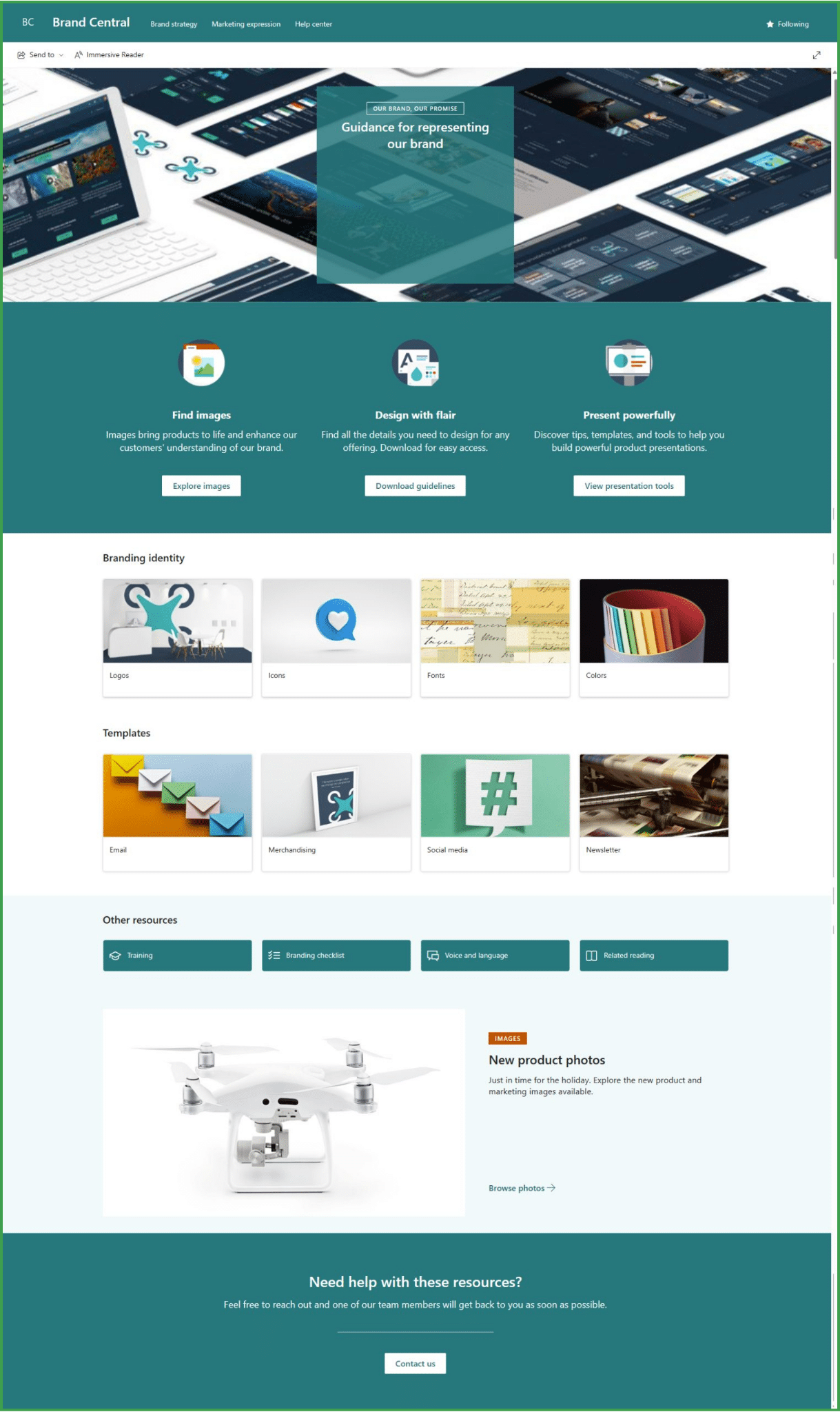Table of Contents
- Introduction
- What is a SharePoint Team Site?
- Key Features of Team Sites
- What is a SharePoint Communication Site?
- Key Differences Between Team Sites and Communication Sites
- Purpose and Use Cases
- Security and Permissions
- Navigation and Customization
- Integration with Microsoft Ecosystem and Beyond
- Expert Tips for Selecting the Right Site
- Conclusion
- Frequently Asked Questions (FAQs)
The Importance of Choosing the Right SharePoint Site
Picking the right SharePoint site is key to improving your organization’s efficiency and keeping things running smoothly. SharePoint offers two main site types: Communication Site vs Team Site. Each is built for specific needs. Knowing what they do and how they fit your goals can make your workflows better and encourage teamwork or targeted communication. Choosing wisely helps avoid wasted effort and boosts productivity.
The objective of the Article
What is a SharePoint Team Site?
A Team Site is designed to foster collaboration within a group, providing a shared workspace for team-specific tasks and communication. Team Sites emphasize real-time collaboration and project management within a smaller group. Integrated with Microsoft 365 Groups, it provides a shared space for teams to store resources, manage tasks, and work on projects in real-time.
Key Features of Team Sites
1. Shared Document Libraries
- Centralized file storage with advanced features like version control, metadata tagging, and co-authoring, which streamline collaboration and organization. Unlike traditional file storage methods, these tools help teams maintain a clear history of changes, categorize files for easier retrieval, and work on documents simultaneously without conflicts.
2. Customizable Web Parts
- We can add customized web parts to the SharePoint Team site, and you can add functionality like task lists, calendars, or Power BI dashboards to tailor the site to team-specific needs.
3. Permission Control
- Permission control in SharePoint Team Sites ensures secure and efficient collaboration by managing user access at various levels. Team sites use a hierarchical permission model, with default groups like Owners, Members, and Visitors simplifying assignments. Permissions can be inherited from the parent site or customized for specific subsites, libraries, or items.
4. Collaboration-Focused Design
- Built to enhance teamwork with tools that support document sharing, task tracking, and communication, these features work together seamlessly to improve overall team productivity. By enabling real-time updates, streamlined workflows, and easy access to shared resources, they reduce inefficiencies and help teams stay aligned on goals.

What is a SharePoint Communication Site?
Key Features of Communication Sites
1. Visually Engaging Layouts
- Leverage modern web parts like hero banners, image carousels, and call-to-action links for professional content presentation. For example, these tools are most impactful in executive communications, such as announcing strategic initiatives, or in product launches where engaging visuals can highlight key details.
2. Shared Document Libraries
- Store and share documents, similar to Team Sites, but focused on providing resources for a broader audience.They support customizable views, permission controls, and integration with Microsoft 365 tools like Teams and OneDrive. Users can organize, share, and access documents efficiently with features like metadata and version control.
3. Permission Control
- Limit editing rights to ensure consistency and accuracy of shared content, enhancing security and reducing errors, especially for sensitive organizational announcements where maintaining content integrity is critical.
4. Responsive Design
- Optimized for viewing on all devices, including desktops, tablets, and smartphones. For example, employees can quickly access important updates or documents during travel, ensuring uninterrupted productivity.

Key Differences Between Communication Site vs Team Site
| Feature | Team Site | Communication Site |
|---|---|---|
| Purpose | Collaboration | Broadcasting Information |
| Security | Microsoft 365 Groups | SharePoint Groups |
| Navigation | Left-hand navigation | Top navigation |
| Layout | Functional and work-focused | Visually appealing |
Purpose and Use Cases
- Team Sites: Perfect for real-time collaboration and managing shared tasks. This includes co-authoring documents, live task tracking, and instant communication through integrated tools like Microsoft Teams, ensuring that all team members are aligned and up to date.
- Communication Sites: Best for sharing curated information with larger groups. Examples include announcements, policy updates, or training materials designed for broad visibility.
Security and Permissions
- TS: Use Microsoft 365 Groups for seamless app integration. Microsoft 365 Groups create a unified identity for team members across apps like Outlook, Teams, and Planner, streamlining collaboration and ensuring consistent permissions across the ecosystem.
- CS: Use SharePoint Groups to control access precisely. For instance, a company might use this feature to ensure that sensitive financial reports are accessible only to senior management, maintaining confidentiality while allowing broader access to general updates.
Navigation and Customization
- Team Sites: Feature left-hand navigation and support a wide range of customizations. Teams can add specific web parts like calendars, document libraries, or task lists tailored to their needs, as well as apply branding elements to align with organizational identity.
- Communication Sites: Offer a simpler, top-navigation design ideal for content sharing. This design enhances user experience by providing clear and intuitive access to key information, helping users quickly find the resources they need.
Integration with Microsoft Ecosystem and Beyond
How Team Sites Integrate
Team Sites connect seamlessly with tools like:
- Microsoft Teams: Enable real-time chat and file sharing. Teams supports collaboration by organizing conversations into channels for specific topics or projects and integrating seamlessly with calendar and meeting tools for efficient scheduling and communication.
- Planner: Keep tasks organized and track progress easily. Its visual boards provide a clear overview of tasks, and the notification system ensures team members stay informed about updates or deadlines, fostering efficient collaboration.
- OneDrive: Ensure secure access to shared documents. OneDrive offers features like version history, enabling teams to track changes and revert to previous versions, as well as offline access for seamless productivity when working remotely.
How Communication Sites Integrate
Communication Sites thrive with integrations like Power BI, Microsoft Forms, and Stream, addressing common organizational challenges such as improving employee engagement through interactive dashboards, streamlining feedback collection, and simplifying company-wide updates with engaging video content.
- Power BI: Embed dashboards for instant performance insights. For instance, you can visualize sales trends over time or monitor employee engagement metrics in real-time to make data-driven decisions effectively.
- Microsoft Forms: Collect feedback directly from your audience. This can include employee satisfaction surveys, training feedback forms, or event registrations. The collected data can then be analyzed to improve employee engagement, refine training programs, or plan better events.
- Stream: Share videos for training or company-wide updates. For example, you can use Stream to share an onboarding tutorial for new employees or a quarterly update video from the leadership team, ensuring consistent and engaging communication.
Expert Tips for Selecting the Right Site
Questions to Ask
-
- Who’s the audience? Is it for a team or a larger group?
- What’s the goal? Collaboration or sharing information?
- What’s the work setup? Does it need to support remote teams?
- What tools are essential? Are specific apps required?
Common Mistakes to Avoid
- Don’t use Communication Sites for collaboration—it won’t work well.
- Avoid cluttering Team Sites with too many features; keep it simple.
How to Switch Site Types
Conclusion
Key Takeaways
- Team Sites: Built for teamwork and shared tasks.
- Communication Sites: Best for sharing polished information with larger groups.
Final Thoughts
Frequently Asked Questions (FAQs)
No, but you can create a new Communication Site and move the content over.
Yes, both types can integrate with third-party tools to enhance their capabilities.




